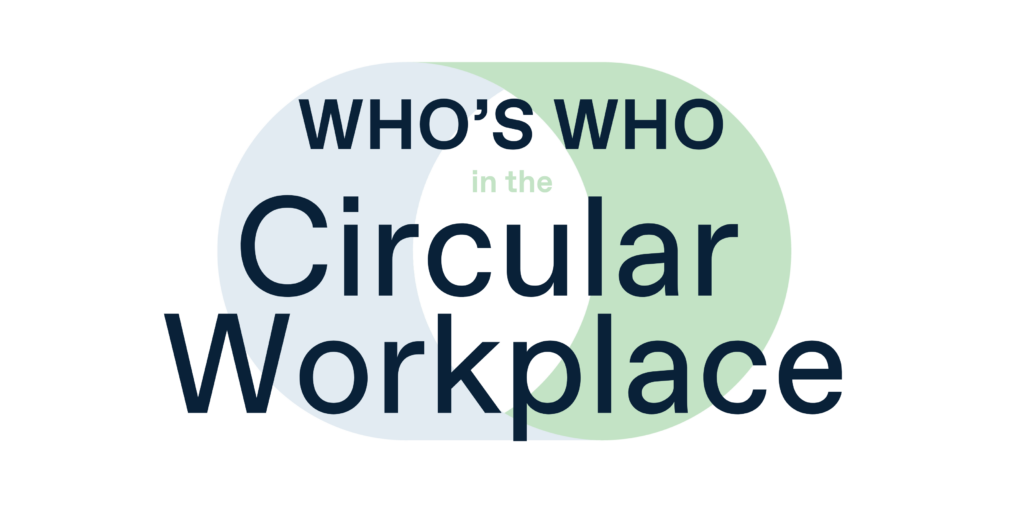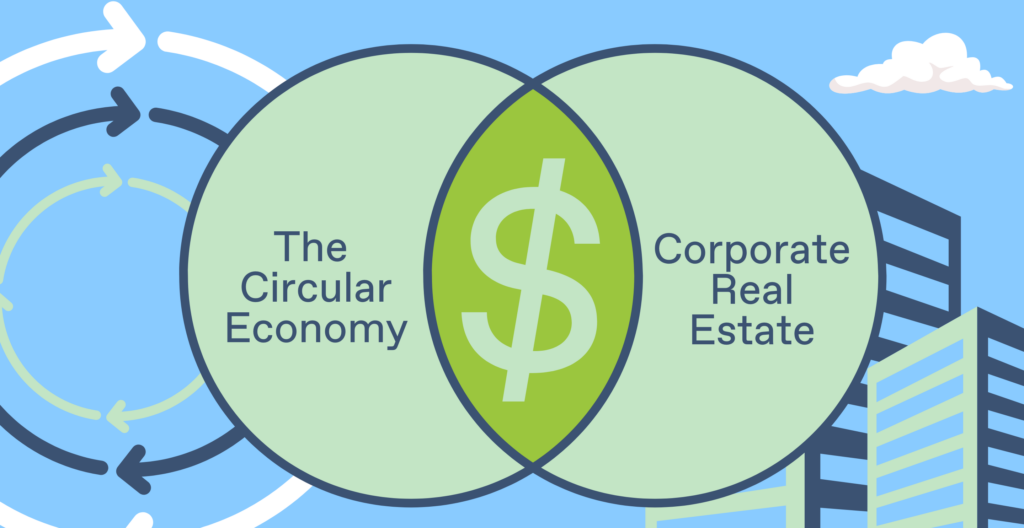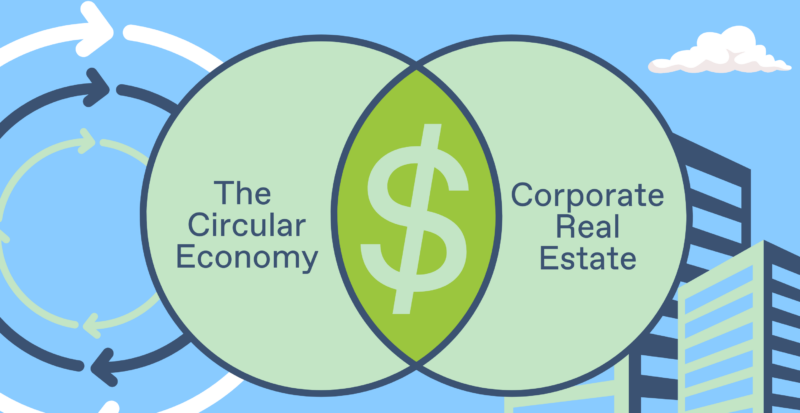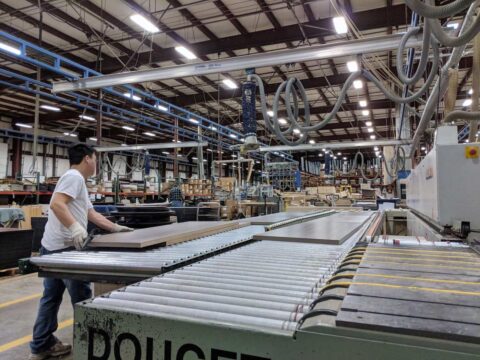Answer two simple questions to get involved today

The next Circular Workplace report is in the works, and we want your input! We’re creating Who’s Who in the Circular Workplace, a guide to the many roles we need to engage to make workplace circularity happen. Collaboration is key to circularity and our goal is to make it easier. We want to connect architects with facilities managers, manufacturers with remanufacturers, designers with deconstruction experts, and beyond.
And so we’re asking:
- What advice do you have for someone in your role?
- What advice do you have for other roles in the circular workplace?
Take 5 minutes to tell us at circularsurvey.com and help create a cross-disciplinary community devoted to workplace circularity!

What corporate real estate has to gain from circularity
What does the circular economy have to do with corporate real estate? Not enough, at least not yet. If you picture a Venn diagram of the two worlds, the overlap today is minimal. But where they do intersect, the results make economic and environmental sense.
Let’s start with money, too often an afterthought in discussions of sustainability. There’s no doubt these are expensive times to work in corporate real estate. Building material costs have increased 38% since 2020, while office furniture and fixtures cost at least 25% more. And though the office leasing market is improving, JLL estimates that 60% of current leases were signed before the pandemic and “may be subject to future downsizing.” All of which means opportunities to cut costs and future proof buildings are more welcome than ever.
At the same time, corporate real estate has an important new role to play in the climate crisis. It’s estimated that the built environment consumes half of all extracted materials and generates 40% of global carbon emissions. A full third of all waste comes from construction projects. And just about every corporate end user has set ambitious and public climate goals. JLL calculates that three out of every four new lease requirements among the top 100 office occupiers in major U.S. markets will be tied to a carbon commitment. That means our choices can make a real difference, and business as usual won’t be enough.
And that brings us to the circular economy. Or as our great-grandparents called it, common sense. The principles are simple: Design out waste, reuse everything you can for as long as you can, and tread lightly on the planet. In corporate real estate, that can mean:
- Reusing existing building structures and incorporating more recycled or pre-owned assets.
- Future-proofing designs with modular construction methods to accommodate changes, minimize waste, and make buildings resilient.
- And when changes become necessary, promoting sustainable and ethical end-of-life solutions for furniture, fixtures, and equipment can reduce landfill waste and positively impact local communities keeping these assets in use for longer.
The promise of the circular economy is we can make meaningful strides toward sustainability that cost less, not more. And we can ensure that these circular solutions become a strategic business advantage. As corporate real estate professionals, we can enhance property value, meet tenant demands, and lead the low-carbon building movement.
So the next time someone asks you where our industry is headed, tell them it’s going in circles. Then explain why that’s a good thing.
What to learn from a top-notch ESG report
What’s the difference between a paint-by-numbers corporate sustainability report and one that really moves things forward? Granular detail and sustained focus, for starters.
But what really sets Hines 2023 ESG Report apart is its continued commitment to the real estate firm’s open-source Embodied Carbon Reduction Guide. This actionable toolkit is among the best out there to explain everything from Environmental Product Declarations to Whole Building Life Cycle Assessments. Hines is showing the way forward, and they’re also making it possible to follow their lead.
We’re always looking for case studies, actionable tips, and news items about the circular workplace. Reach out at hello@circularworkplace.com to join our coalition.
Signup for the Roundup
Subscribe to our newsletter and we’ll send you circular workplace updates every month






